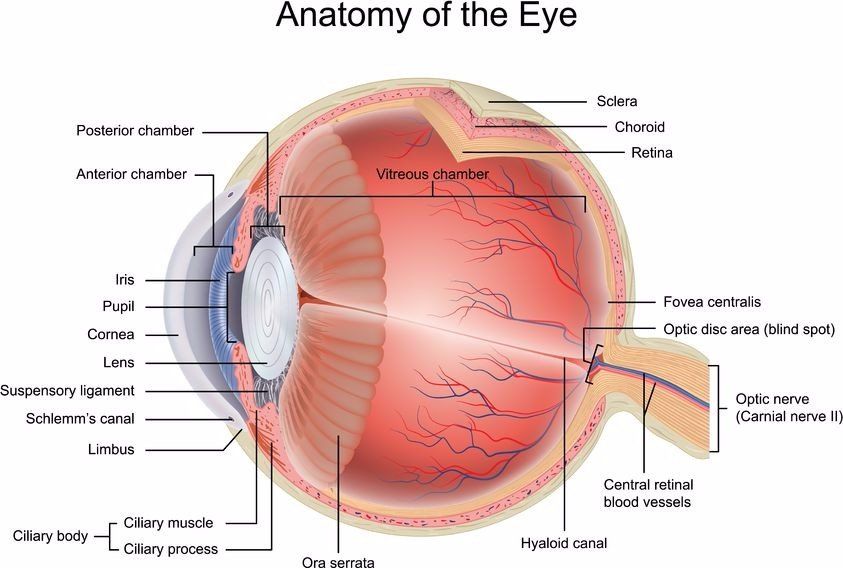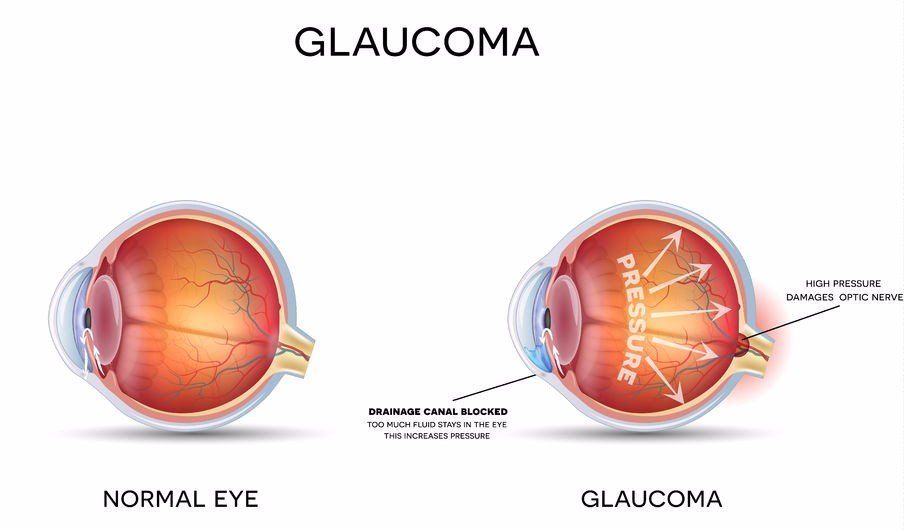What Is Glaucoma?
January… the start of a new (hopefully better) year, the peak of winter, and the season of self-improvement. But January isn’t only the month of resolutions and snow days. Did you know January is also glaucoma awareness month? In case you didn't, we’re here to help spread said awareness and hopefully add taking better care of your vision to your list of New Year to-do's. So let’s jump right in.
What Is Glaucoma?
Most of you have probably at least heard of glaucoma, but what exactly is it? Glaucoma is actually the term for a group of diseases that cause damage to the optic nerve resulting in vision loss and/or blindness. Still lost? To better understand how this happens, let’s go over some of the eye’s anatomy.
At the very back of each eye you have something called an optic nerve. The optic nerve is made up of a group of multiple nerve fibers that connect the brain to the eye and transmit signals from your retina (light sensitive tissue that lines the inside of the eye) that are then translated into the images we see.
The insides of your eyes also contain two gel-like fluids that help maintain the eye’s shape. These are called the aqueous and vitreous humor. The aqueous humor is produced behind the iris (the colored part of your eye) and fills the space between the iris and the innermost layer of the cornea as well as the area between the iris and the lens (transparent flexible tissue that helps focus light and images). In addition to helping the eye maintain its shape, the aqueous humor also provides nutrients to the parts of the eye that lack their own blood supply.
What Does This Have To Do With Glaucoma?
You can think of the eye as being similar to a balloon in that you don’t want there to be too much pressure inside, but you don’t want there to be not enough pressure either. So with a constant supply of fluid being created, how is this balance maintained?
The eye regulates its internal pressure by utilizing a drainage system. Excess fluid exits the eye by flowing through spongy tissue between the iris and cornea called the trabecular meshwork and into a drainage canal. Any disturbance in this balance of production and drainage will cause a buildup of excess fluid and in turn an increased intraocular eye pressure (IOP).
Over time, the constant increase of pressure on the optic nerve will eventually cause damage to individual optic nerve fibers, leading to vision loss. This process of pressure build up and optic nerve damage is called glaucoma.
Different Kinds Of Glaucoma
As mentioned earlier, glaucoma is a group of diseases - meaning there are several different types.
Primary Open Angle Glaucoma
Primary Open Angle Glaucoma (POAG) is the most commonly seen type of glaucoma. Remember the anatomy lesson we just had? This is the process that POAG follows. The internal ocular pressure increases gradually due to a blockage in the eye’s drainage canals leading to damage of the optic nerve. With this type of glaucoma vision loss is slow and often displays no other symptoms. There is also a strong link in genetic predisposition associated with POAG.
Angle Closure Glaucoma
Angle Closure Glaucoma is a much less common form caused by a narrowing or completely closed entrance to the drainage canal. Think of this like the door to the hallway being closed vs. there being boxes blocking part of the hallway (angle closure vs. open angle glaucoma). When this is the case, eye pressure can rise very quickly. This dramatic increase will cause sudden eye pain, nausea, headaches, blurred vision, and requires immediate medical treatment.
Normal Tension Glaucoma
Having what would typically be considered a ‘normal’ IOP doesn’t mean you are out of the woods for glaucoma. Also referred to as low-pressure glaucoma, normal tension glaucoma occurs when the nerve is damaged even though the internal pressure is not excessively high. Because of this, the eye pressure needs to be kept at an even lower level to prevent further progression. While the cause for this type of glaucoma is still not completely understood, it is believed to be due in part to either an unusually fragile optic nerve or reduced blood flow to the nerve.Other Types Of Glaucoma
There are also a handful of other types of glaucoma including secondary, congenital, pigmentary, and neovascular.
For more information check out this page from the Glaucoma Research Foundation .
Risk Factors
Glaucoma can affect anyone at any age. However, there are certain factors that can put you at more of a risk for developing this sight stealing disease. It is important to stay on top of your annual eye health exams since glaucoma is one of the many eye complications that can present no symptoms until vision is lost. If you have any of the risk factors listed below, be sure to talk with your Optometrist about glaucoma specific testing.
- Over the age of 40
- Family history of glaucoma
- African American, Hispanic, or Asian heritage
- Systemic conditions such as high blood pressure or diabetes
- Thin corneas
- High glasses prescription
- Recent or previous eye injury
- Consistently elevated IOP measurements






